These manuals provide detailed exercises and experiments to study the structure and function of the human body, offering practical insights for students and educators alike.
1.1 Overview of the Laboratory Manual
The laboratory manual serves as a comprehensive resource for hands-on learning, providing structured exercises, experiments, and questions to explore human anatomy and physiology. It is designed to complement theoretical studies, offering practical activities that enhance understanding of bodily structures and functions. The manual typically includes dissection guides, microscopic examinations, and labeling exercises, along with opportunities for data collection and analysis. Its clear organization and detailed content make it an essential tool for both students and instructors in anatomy and physiology courses;
1.2 Purpose of the Answer Key
The answer key is designed to assist students and educators in verifying solutions and understanding complex concepts presented in the laboratory manual. It provides detailed explanations, step-by-step solutions, and correct answers to exercises, ensuring accurate learning and self-assessment. Instructors can use it to grade assignments efficiently, while students benefit from clarifying doubts and reinforcing their understanding of anatomy and physiology. This resource is essential for effective learning and teaching, promoting academic success and mastery of the subject matter.
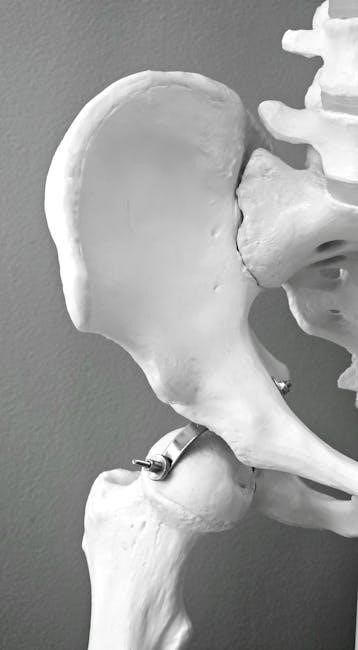
Importance of Answer Keys in Learning
Answer keys provide clear solutions, helping students verify their work and understand mistakes. They enhance self-assessment, improve problem-solving skills, and reinforce learning outcomes effectively in anatomy and physiology studies.
2.1 Enhancing Understanding Through Detailed Solutions
Detailed solutions in answer keys provide a clear breakdown of complex anatomical and physiological concepts, enabling students to grasp intricate topics systematically. By offering step-by-step explanations, these resources help bridge gaps in understanding, especially for visual learners. For instance, exercises on directional terms or microscopic tissue identification are simplified through illustrated answers, ensuring clarity. This approach not only reinforces theoretical knowledge but also equips students with practical problem-solving skills, making it an indispensable tool for self-assessment and exam preparation in anatomy and physiology studies.
2.2 Role in Self-Assessment and Exam Preparation
Answer keys play a pivotal role in self-assessment by allowing students to evaluate their performance and identify areas for improvement. Detailed solutions provide clarity on complex topics, enabling learners to correct misunderstandings and reinforce their knowledge. This resource is equally valuable for exam preparation, as it offers practice opportunities and familiarizes students with question formats. By reviewing answers, individuals can refine their critical thinking and time management skills, ultimately enhancing their readiness for assessments in anatomy and physiology.
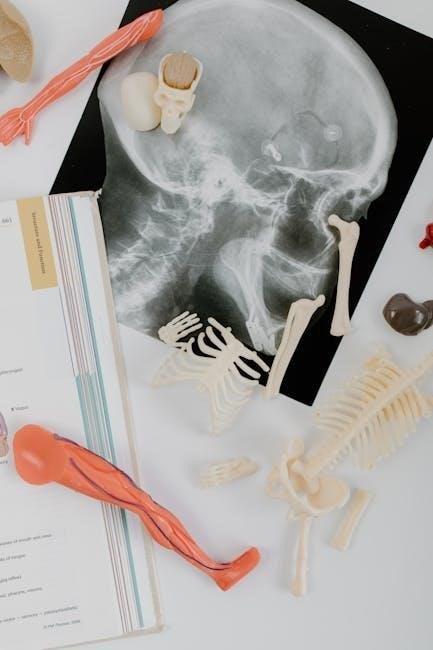
Key Features of the Answer Key
The answer key offers detailed explanations, step-by-step solutions, and visual aids, ensuring comprehensive understanding and enhanced learning for anatomy and physiology lab exercises.
3.1 Detailed Explanations and Step-by-Step Solutions
The answer key provides comprehensive explanations for lab exercises, experiments, and questions, breaking down complex concepts into clear, manageable steps. Each solution is thoroughly elaborated, ensuring students grasp both theoretical and practical aspects of anatomy and physiology. Visual aids like diagrams and illustrations further enhance understanding, making abstract processes more tangible. This structured approach caters to diverse learning styles, helping students master challenging topics with confidence.
3.2 Visual Aids and Diagrams for Better Comprehension
Visual aids like diagrams, illustrations, and 3D models complement textual explanations, making complex anatomical structures and physiological processes easier to grasp. These tools enable students to visualize spatial relationships and dynamic functions, enhancing their understanding of concepts. Practice Anatomy Lab (PAL) and multimedia resources, such as lab videos and animations, are integrated to provide interactive learning experiences, ensuring a deeper and more engaging comprehension of human anatomy and physiology.
Accessing the Answer Key
Answer keys are typically restricted to instructors to prevent misuse. Students can access them through online platforms or subscription services, while educators may request them directly from publishers.
4.1 Availability for Instructors and Students
Instructors can access answer keys by requesting them directly from publishers or through institutional subscriptions. Students typically rely on online platforms or supplementary resources, as direct access is often restricted to educators to maintain academic integrity and prevent misuse.
4.2 Online Platforms and Subscription Services
Answer keys are accessible through various online platforms, educational portals, and subscription-based services like Pearson or McGraw-Hill. These platforms offer secure access to instructors, ensuring controlled distribution. Additionally, some websites provide step-by-step solutions and study resources to complement the laboratory manual, aiding both instructors and students in their academic pursuits effectively.

Popular Editions of the Laboratory Manual
The 12th and 13th editions are widely recognized, offering enhanced content, updated visuals, and improved learning tools for students and educators in anatomy and physiology.
5.1 12th Edition Key Features
The 12th edition of the laboratory manual includes detailed answer keys, step-by-step solutions, and enhanced visuals. It provides comprehensive coverage of exercises, experiments, and concept questions, aiding students in mastering human anatomy and physiology. The manual is designed to support both classroom and self-study environments, offering clear explanations and practical applications. Its structured approach ensures that learners can effectively grasp complex topics, making it a valuable resource for academic success.
5.2 13th Edition Updates and Enhancements
The 13th edition introduces enhanced digital integration, including interactive simulations and multimedia resources. It features updated lab exercises, improved visuals, and expanded coverage of emerging topics in anatomy and physiology. The answer key now includes detailed explanations for complex questions, ensuring deeper understanding. Additionally, the manual incorporates real-world applications, preparing students for practical scenarios in healthcare careers. These updates make it a more comprehensive and engaging tool for modern learners.
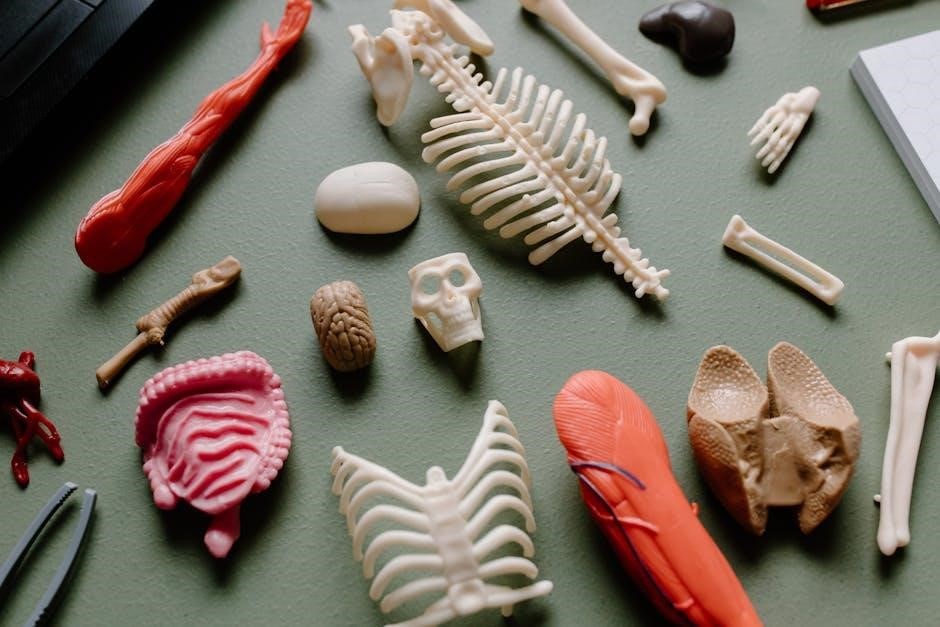
Digital vs. Print: Which is More Effective?
Digital offers flexibility and accessibility, while print enhances tactile learning and retention. Both formats cater to different learning preferences, ensuring effective education.
6.1 Benefits of Digital Access and Convenience
Digital access to laboratory manuals offers unparalleled convenience, allowing students to study anywhere and anytime. With portable formats like PDF, learners can easily access materials on multiple devices. Interactive features such as hyperlinks, videos, and animations enhance comprehension. Digital resources often include step-by-step solutions, diagrams, and practice problems, making them ideal for self-study. Additionally, digital manuals are frequently updated, ensuring students have the most current information. This flexibility makes digital access a powerful tool for modern education, catering to diverse learning styles and preferences.
6.2 Advantages of Print for Hands-On Learning
Printed laboratory manuals offer a tactile learning experience, ideal for hands-on activities. Students can annotate pages, highlight key points, and sketch diagrams, enhancing retention. The physical format allows for easy reference during lab exercises without digital distractions. Print materials are also reliable in settings where technology may fail. Additionally, flipping through pages and comparing visuals side by side can deepen understanding. For many learners, print remains a preferred tool for immersive, interactive learning experiences in anatomy and physiology studies.
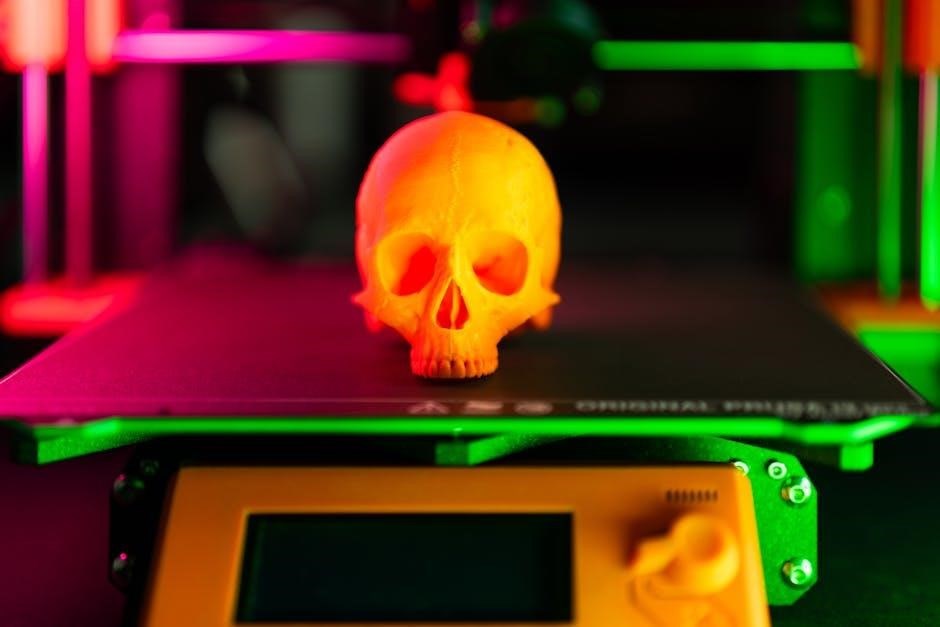
Troubleshooting Common Issues
Common issues include accessing locked PDFs, technical difficulties, and unclear content. Resolving these often involves contacting instructors or support teams for assistance or clarification.
7.1 Technical Difficulties in Accessing the PDF
Common technical issues include locked or restricted access to PDFs, requiring instructor requests for keys. Connectivity problems or outdated software may also prevent access. Solutions involve contacting support, verifying login credentials, or ensuring stable internet. These steps help resolve issues efficiently and ensure uninterrupted access to essential study materials for anatomy and physiology students.
7.2 Clarifying Content for Better Understanding
Clarifying content involves providing detailed explanations and visual aids to enhance comprehension of complex anatomical and physiological concepts. Instructors often use answer keys to explain challenging topics, ensuring students grasp key principles. Interactive tools, such as labeled diagrams and step-by-step solutions, further aid in understanding. These resources help students overcome confusion, fostering a deeper mastery of human anatomy and physiology through clear, structured explanations and visual learning aids.
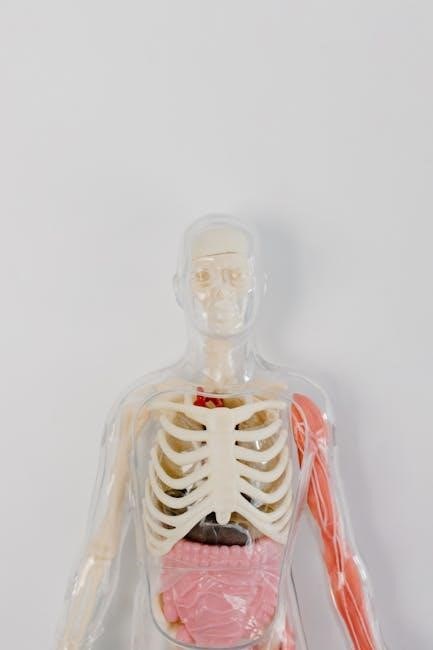
Best Practices for Using the Answer Key
- Reference the answer key after attempting questions independently to reinforce learning.
- Use detailed explanations to clarify doubts and enhance understanding of complex concepts.
- Employ visual aids and diagrams to supplement learning and retention.
- Leverage the key for exam preparation and self-assessment to identify areas for improvement.
8.1 Effective Study Techniques
To maximize learning, use the answer key to verify solutions after attempting exercises independently. Focus on understanding errors by reviewing detailed explanations.
Engage in active learning by self-quizzing and labeling diagrams without assistance. Prioritize weak areas identified through self-assessment.
Regularly review concepts to reinforce retention and build a strong foundation in anatomy and physiology.
8.2 Maximizing Learning Outcomes
To maximize learning outcomes, utilize the answer key to reinforce understanding of complex topics through detailed explanations and visual aids. Apply knowledge by practicing exercises and relating concepts to real-world scenarios. Regular review and active engagement, such as teaching others, enhance retention. Integrate multimedia resources for a comprehensive learning experience, ensuring mastery of anatomy and physiology concepts.
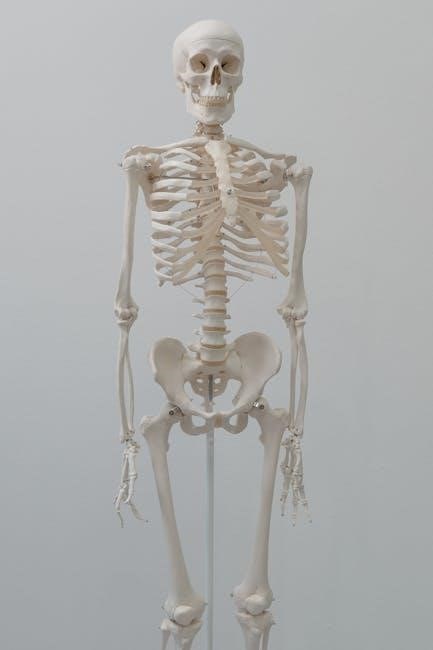
The Role of the Manual in Education
The manual serves as a vital educational tool, aligning with curriculum objectives and preparing students for healthcare professions by providing foundational knowledge and practical skills in anatomy and physiology.
9.1 Supporting Curriculum Objectives
The laboratory manual aligns with educational goals by offering structured exercises and experiments that reinforce theoretical concepts. It ensures students gain practical skills and a deeper understanding of human anatomy and physiology, preparing them for clinical applications. Each activity is designed to meet specific learning outcomes, fostering critical thinking and hands-on experience. This alignment helps educators deliver comprehensive instruction, making the manual an essential resource for achieving curriculum objectives effectively.
9.2 Preparing for Future Careers in Healthcare
The laboratory manual equips students with foundational knowledge of human anatomy and physiology, essential for healthcare careers. By mastering practical skills and clinical applications, students gain confidence in diagnosing and treating conditions. The manual bridges education and real-world healthcare, fostering critical thinking and problem-solving abilities. This preparation enables future professionals to excel in diverse medical fields, from nursing to surgery, by providing a solid understanding of the human body’s structure and function.

Future Trends in Anatomy and Physiology Resources
Emerging technologies like AI, VR, and interactive multimedia are revolutionizing anatomy and physiology education, offering immersive learning experiences and personalized study tools for students and professionals.
10.1 Integration of Interactive and Multimedia Elements
The integration of interactive and multimedia elements, such as 3D models, videos, and virtual simulations, enhances learning by providing immersive experiences. These tools allow students to visualize complex anatomical structures and physiological processes, improving retention and understanding. Platforms like Visible Body offer detailed animations and interactive labs, making anatomy and physiology more engaging. Such resources cater to diverse learning styles, ensuring a comprehensive and dynamic educational experience for both students and educators.
10.2 Potential AI and Virtual Reality Applications
AI and Virtual Reality (VR) are revolutionizing anatomy and physiology education by creating personalized learning experiences. AI can adapt content to individual student needs, while VR provides immersive simulations for exploring human body systems. These technologies enable realistic dissections, interactive case studies, and real-time feedback, making complex concepts more accessible. Future advancements may include AI-driven tutoring and VR labs, offering a dynamic and efficient way to master human anatomy and physiology, enhancing both teaching and learning outcomes significantly.
The human anatomy and physiology laboratory manual answer key is an essential resource, enhancing learning and understanding through detailed solutions and practical applications, benefiting both students and educators.
11.1 Summary of Key Points
The human anatomy and physiology laboratory manual answer key provides comprehensive solutions to exercises, enhancing understanding and practical application. It supports self-assessment, exam preparation, and hands-on learning through detailed explanations and visual aids. Designed for both students and educators, the manual aligns with curriculum objectives, preparing learners for healthcare careers. Its availability in digital and print formats ensures accessibility and flexibility, making it an invaluable resource for anatomy and physiology education.
11.2 Final Thoughts on Utilizing the Answer Key
The answer key serves as an essential tool for mastering human anatomy and physiology, offering detailed solutions and visual aids to enhance learning. By leveraging this resource, students can reinforce their understanding, identify knowledge gaps, and prepare effectively for exams. Educators benefit from its alignment with curriculum goals, fostering engaging and effective instruction. Embracing the answer key as a study companion ensures a comprehensive and successful learning experience in anatomy and physiology.

Additional Resources
Supplement your learning with online forums, educational websites, and supplementary textbooks for deeper understanding and practical skill development in anatomy and physiology.
12.1 Recommended Supplements for Deeper Learning
Enhance your understanding with additional resources like online anatomy platforms, such as Visible Body, which offer 3D models and interactive labs. Supplementary textbooks, like the Human Anatomy and Physiology by Elaine Marieb, provide in-depth explanations. Utilize practice labs and video tutorials for hands-on experience. Online forums and study groups can also offer peer support and insights. These tools collectively foster a comprehensive learning environment, ensuring mastery of complex anatomical and physiological concepts.
12.2 Online Communities and Forums
Engage with online platforms like Visible Body and academic forums to deepen your understanding. Communities such as Reddit’s r/AnatomyAndPhysiology and specialized Q&A sites offer peer support and expert insights. These forums allow students to discuss challenging topics, share study tips, and access additional resources; Interactive tools and multimedia content on these platforms enhance learning and provide a collaborative environment for mastering anatomy and physiology concepts. Active participation fosters engagement and helps clarify complex subjects through real-time discussions and shared knowledge.